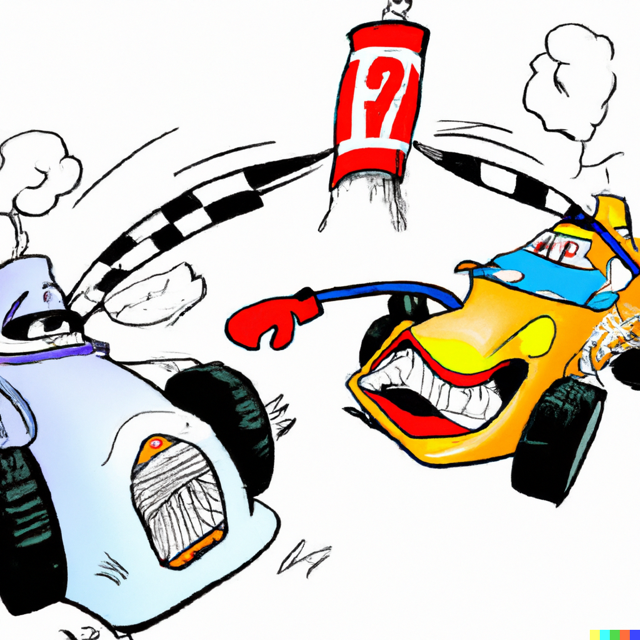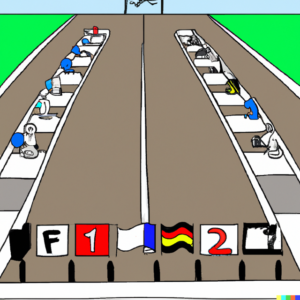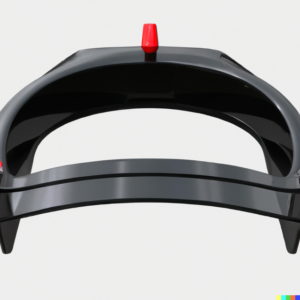Formula 1 vs NASCAR

Formula 1 vs NASCAR
Formula 1 and NASCAR are two of the most popular motorsports globally, each with its own massive fanbase.
Looking at motorsport, you’d think it would all be the same. A race sees several cars competing against one another to clinch first place. But while Formula 1 and NASCAR share this similarity, there are also many differences between these two forms of motor racing.
So, what is it that Formula 1 fans love about F1 and NASCAR fans love about stock cars? Keep reading to find out. If you enjoy this, take a look at Indy car versus Formula 1.
Formula 1 vs NASCAR: The Similarities
It’s a team effort
Both Formula 1 and NASCAR teams are made up of a large number of people to keep everything running smoothly. Both sports have teams consisting of a race director/team manager, mechanics, and of course, the drivers, as well as other key roles.
Both NASCAR and Formula 1 can use multiple drivers in their teams, and the drivers and teams in both sports have championships.
Big money racing
Formula 1 and NASCAR are two of the world’s most expensive and money-powered sports. Both cars cost millions of dollars to make and run every year, plus there’s a lot of money pumped into partners and sponsors for each team. (see how much a Formula 1 car costs)
Formula 1 vs NASCAR: The Key Differences
The car & pit crew
The first main difference between Formula 1 and NASCAR is the cars used in each sport. While Formula 1 uses open-wheel cars, NASCAR uses stock cars.
A NASCAR vehicle is a modified version of a “stock” chassis from either a Ford, Chevy or Toyota. NASCAR cars employ a full body with bumpers and fenders. They essentially look like a streetcar.
F1 cars look nothing close to the cars you see on the road as they are specially designed from the ground up by each individual team. These cars use four-stroke 1.6-liter turbo V6 engines that deliver 1,000 horsepower and weigh around 1,700 pounds. These cars are mostly made up of carbon fiber and tuned for maximum corner speed with lots of downforce.
On the other hand, NASCAR vehicles use 5.9-liter EFI V8 engines that produce 750 horsepower and they are double the weight of an F1 car at around 3,300 pounds. These cars also use what is known as the “Car of Tomorrow” – in which the chassis of the car is based on the next generation of road vehicles.
F1 cars are much more technically advanced than their NASCAR counterparts. Designed for maximum downforce and aerodynamics, Formula 1 cars make use of features like the drag reduction system (DRS), fins and aerofoils. However, a NASCAR car has features not found in an F1 car, such as the flaps that deploy when the vehicle turns sideways to prevent rolling.
Another key difference between a Formula 1 team and a NASCAR team is the amount of pit crew members they have. A Formula 1 driver has a team of 20 pit crew members that work on the car during a pit stop, while a NASCAR driver only has a crew of 5 to work on the car, making their pit stop times significantly longer than F1’s 3-second pit stops.
The race format, track & rules
The DNA of Formula 1 and NASCAR races and race tracks play major roles in determining their race cars’ performance.
Given each car’s design and speed differences, Formula 1 races can be likened to sprints, while NASCAR races are more like marathons.
Formula 1 races are typically completed within 2 hours and see drivers making their way through a series of turns each lap on different race track formats. NASCAR races can take more than 3 hours to complete, with only 2 or 4 left-hand turns per lap to negotiate around an oval track.
Both Formula 1 and NASCAR include pit stops in order to keep the cars physically going for the entire race, but the reasons for these pit stops vary. In Formula, drivers are required to use at least two of three available types of tires, which requires at least one pit stop. As NASCAR races are much longer, drivers stop various times to change tires and refuel.
Another major difference between the two is that time doesn’t actually matter in NASCAR. NASCAR races run until all laps are completed, while Formula 1 has a limit of 2 hours, regardless of how many laps have been completed.
The length of each sports season also differs. Formula 1 has around 19 races each season, while NASCAR has at least 36 races in a season.
The strategy
Between the design of each car, the length of the race and the rule differences, both sports employ wildly different strategies to win races.
In Formula, the strategy to win is generally pretty straightforward: the fastest car is the one that usually wins. This is why Formula 1 cars have an aerodynamic design, and teams are eager to pour as much money as possible into research, development and engineering.
There are a few strategies that a Formula 1 driver and their team can use to even their odds. One, for example, is overcutting or undercutting, where a well-timed pit stop can see a driver beating their rival on track.
However, these types of strategy calls require the driver to already be close to the front of the grid.
In NASCAR, on the other hand, even the driver starting at the back of the starting line can see themself finishing first. Strategies like grinding against other cars to slow them down (banned in F1) and driving nose-to-tail are two strategies commonly employed by NASCAR drivers.
Additionally, strategies in Formula 1 are targeted more around both the driver’s and team’s championships, while NASCAR racing focuses its strategies on a driver for race wins.
Final Thoughts
Both F1 and NASCAR vehicles are powerful sports cars in their own right. From the car’s design to the race format and rules, each sport presents its own unique challenges when it comes to the art of car racing.
Whether you’re watching an F1 or NASCAR race, you’re bound to see some exciting action!





